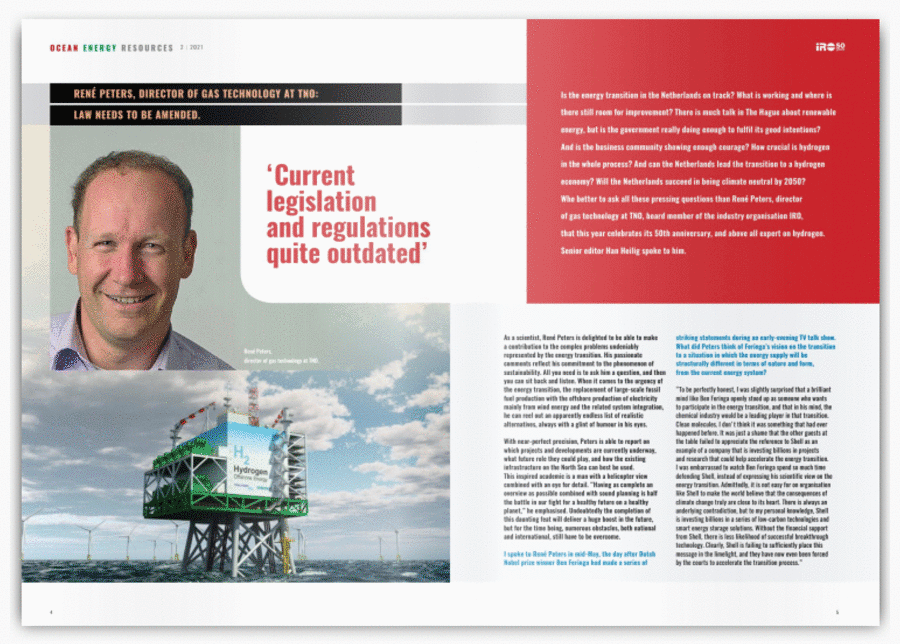[Article] HE Podcast Roundup
Energy Disrupter
Strike up a conversation about podcasts with just about anyone and they’ll have something to say. The passionate fans among us have long lists of shows that we subscribe to called podcast libraries, and we receive updates as soon as new episodes are released. We’re happy to pull out our devices and share our libraries with others.
What’s great about podcasts is that they are hands-free. Listeners tune in while exercising, gardening, cooking, or handcrafting. Lots of contractors listen in their vehicles, driving between clients. Just as typeface and lighting help determine the optimal reading environment, audio quality is king in the podcast. There is plenty of affordable high-fidelity technology, leaving no excuses for low-fi sound. The five podcasts surveyed here all pass the sound check for high-quality audio. Voices should sound as though they are a few feet away, not in an echo chamber. Ditto the interviewee. This is especially important when the interviewee is remote. There are easy ways to address the problem of sound quality when the interviewer and the interviewee are in different places. Bill Spohn, for example, when he books an interview, recommends a good-quality inexpensive microphone, if the interviewee doesn’t already have one, and records directly from the interviewee’s mic to his or her local hard drive. A few apps are available for this, that record directly from mic to hard drive, notably ZenCastr.
What should a good podcast do? Same thing as any other medium—delight, inform, and inspire. How should it do that? By being well researched, by sounding good, and by introducing the topic at hand and then delivering on that introduction, so the listeners get what they expect. This is important in an audio show, because you can’t skim through and scan headings, as you can with the written word. All of the following podcasts come through on these standards, and then some.
Five Podcasts Worth Listening To
- Bill Spohn’s podcast, Building HVAC Science, is part of the Blue Collar Roots Media Network, furthering education for plumbers, HVAC technicians, mechanics, and electricians. Bill got it right from the start, working with an engineer to edit and mix his episodes. He told me about his process in an interview we did together in Pittsburgh. “I got into it in 2017, when a semipro podcaster, Bryan Orr, approached me,” he says. “He asked if I would do one on the intersection of HVAC and building science. He coached me with videos and resources.” (Bryan Orr’s podcast is HVAC School: For Techs by Techs). Geared toward the HVAC professional, The Building HVAC Science Podcast features interviews with experts, who somehow make the topic accessible to the interested amateur while remaining technically meaty to the passionate contractor. It’s on point, well-organized, fun, but with limited goofing around. Bill’s shows have a nice tidy flow to them. Show length: About 40 minutes. Frequency: Weekly, since 2017.
- Corbett and Grace Lunsford’s Building Performance Podcast translates the concerns of the high-performance building industry to the mainstream, as well as to the professionals within it. They saw a disconnect between the pace of science and technology and lack of education about houses in the mainstream media. Both performing artists by training, they knew they could bridge that gap, and they launched a media crusade that includes, among other projects, a national road show called the “Proof is Possible Tour,” where they demonstrated building science dynamics in a tiny house that they built and towed around the U.S.; and a TV show called “Home Diagnosis” (now on PBS). Their podcast is the audio tentacle of that crusade. Begun in 2009, it was one of the first home performance podcasts. After 10 years and 80 episodes, the Lunsfords moved from an expert interview format to a Q&A model, and the Lunsfords answer home performance questions from fans of the television series. Show length: 30 minutes. Frequency: Bimonthly.
- Brought to you by Positive Energy, and winning my award for best logo—a round flask with a house inside and a few bubbles—The Building Science Podcast begins with an artsy sound collage quote from RadioLab. Because the narrators, Kristof Irwin and Michael (Miguel) Walker, travel to conferences and interview live and on-site in various and unpredictable spaces, the sound quality is variable. They make up for that in thorough research, and in the presentation of accompanying text and images on their site for each episode. I asked Miguel what he and Kristof set out to accomplish with their podcast. “We began producing this show because we were constantly having meetings and giving talks wherein crowds of building professionals were expressing the desire for better-performing projects,” Miguel told me, “but they didn’t understand how to get the outcomes they wanted. Most people assumed it was because they didn’t know what technologies to use, but the upside potential of homes and other buildings is not limited by technology. Our problems are systems based, and systems require new ways of thinking to change. The show was intended to be a resource for people to shift their perspective, learn about the physical reality of buildings, and expand the audience of high-performance building geeks.” It gets rave reviews; most listeners seem to be building professionals, but this podcast would also appeal to the engaged homeowner. Show length: About an hour. Frequency: Bimonthly.
- The hosts of The Green Architects’ Lounge, Chris Briley and Phil Kaplan, drink a featured cocktail each episode (recipe provided), and there is more joking and laughter than in other shows. This show features great Cuban big-band introductory music. According to one reviewer, you may have to listen to the whole show to get one or two practical gems of wisdom, but to some, it’s worth the wait, and the good cheer is enjoyable. Other listeners might want to skip the drink for the meat. Show length: 40 minutes. Frequency: Weekly.
- Boasting 550 episodes since 2006, Iaqradio is hosted by Cliff Zlotnick and Joe Hughes. Their byline is “This is the place where the world discusses indoor air quality, the built environment, and disaster restoration issues.” Cliff posts a blog after every episode. Intro music is ever changing and always features something uplifting, like blues and reggae. You can sometimes catch host Joe Hughes singing along in his bearlike gravel voice! Podcast production is often a low-paying labor of love, a break-even project that acts as a voice supporting a larger project—that is, not an end in itself. As Joe says, “I don’t think we expected to be around 13 years, and it’s more work than we expected for less money, but it’s worth it. Because of our longevity and reputation for being fair, we can get most of the guests we want.” Show length: About an hour. Frequency: Weekly. Airs live every Friday at noon, Eastern time: You can get continuing education credits for listening. Whether you take the credit or not, you will get smarter.
How to Listen and Subscribe to Podcasts
You can simply listen to any podcast from the show’s website. It’s also easy to subscribe and receive automatic updates of a given show right to your computer or your device, using your device’s onboard Podcast app (like Podcasts for iPhone) or downloading one of the many podcast apps available, allowing you to listen on the go.




















